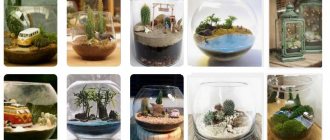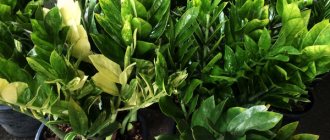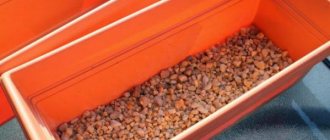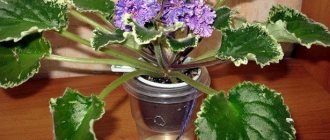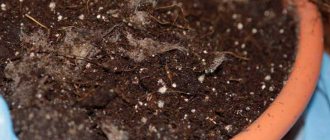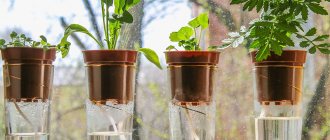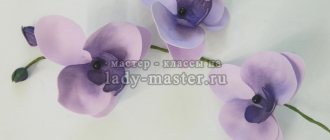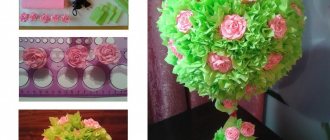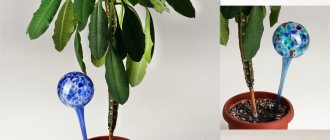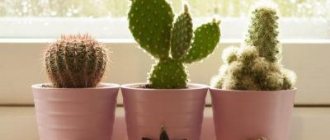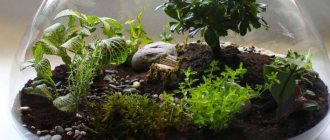When an amateur florist already has sufficient experience in growing succulents and cacti and knows the features of caring for these plants, then you can try your hand at creativity. We are talking about creating compact mini-gardens from the large and diverse world of desert flora. This is a very exciting process. And even if everything doesn’t work out right away, you will get great pleasure. Everything is not so difficult if you listen to the advice of experienced flower growers.
Some potted succulents sometimes look dull and lonely. And in combination with other plants that are suitable for care and maintenance conditions, they will show themselves in all their glory.
Recommendations for planting
In order for the florarium to look beautiful in the interior, you need to put in a little effort and use your imagination to create a composition of succulents. Succulents in glass look unusual, especially compositions placed in a transparent teapot. Succulents look elegant in marble pots. Beginning gardeners, when creating a florarium, may have a question about which succulents can be planted together and which ones cannot. The recommendations of experts are as follows:
- You can plant succulents together that have a similar structural system and similar care requirements. One plant accepts a lot of sun, and the second likes to be in partial shade; such plants are incompatible in the same florarium.
- You need to choose plants that are similar in size. If you place a central large flower in the aquarium, and place tiny succulents around the edges, then the large one will take moisture from the small ones and interfere with the root system of the small flowers with its roots.
- Some gardeners decorate a composition of succulents in a pot with moss. However, you should not overdo it with moss, since it has the ability to absorb a lot of moisture, which can cause the flowers to wither and die. Sphagnum moss is usually used for decoration.
- You can decorate a florarium not only with moss, but also with stones. It is better to take pebbles for succulents of the same size. You can paint your own succulent stones. You can also use colored sand, pearl beads, and shells in decorating florariums.
- When planting succulents in a florarium, you need to be careful not to damage the fragile plants and their root system. Before planting, be sure to inspect the plant for rot and other diseases, as well as parasites. Only healthy plants can be planted.
Succulents in a transparent teapot
Video about mini-kindergartens and caring for them
There is also a more economical option - find a suitable glass vessel at home and fill it according to your taste and desire.
What plants can be used
The center of the composition should be either in the center or on the edge. For the center, tree-like types of succulents are used. For example, you can use:
- Aeonium arboretum;
- Dorstenia;
- Sedum dendrodium tree (Sedum dendrodium);
- Pedilanthus tithymaloides (variety – low) (Pedilanthus tithymaloides v. Nanus);
- Crassula Hobbit or Gollum, as well as other varieties of Crassula.
- Cotyledon.
Then you need to place two or three small succulents or cacti . Of the succulents, some types of aeoniums (tiered, layered) look very beautiful, Dinteranthus microspermus - a plant that looks like gray stones in appearance, blooms with a yellow flower. You can also plant the hardiest cacti:
- Mammillaria;
- Echinopsis (Echinopsis);
- Rebutia aureiflora rubriflora;
- Chamaecereus silvestry.
It is desirable, and even necessary, to leave space in the foreground for small plants , especially if, as they grow, they will hang in small vines along the edge of the container. The more varieties there are, the more interesting the composition will become. Here you can place some of the plants such as:
- Weinberg's Sedum (Sedum weinbergii);
- Siebold's Sedum (Sedum sieboldii);
- Other types of sedum (Sedum).
Images
This is also purely a matter of imagination, so below are some photos for inspiration.
Landscapes with mountains and rocks
Below we will talk more about landscapes, only more complex. Recreating mountains, cliffs, islands lost in the white foam of sea waves is relatively easy to achieve. Use decorative stone chips, marbles, stones, driftwood, cobblestones, and their plaster imitations.
Stream or waterfall
The technique is quite popular - plants or stones imitate spilling water. This technique is often used in open ground flower beds, using ground cover flowers (pansies, ageratum, soapwort, aubrieta, arabis). Succulents will successfully cope with the same task. Blue-gray echeverias are ideal.
However, nothing prevents the spilled “waves” from being of a different shade:
Succulents can be an excellent addition to a stone stream:
Animals
We create original compositions from succulents and cacti with our own hands
There are many ideas on how to use cacti and succulents for decoration. We offer you to consider several exquisite ideas that you can easily create yourself.
Exquisite "living pictures"
Phyto-pictures or “living pictures” are very popular. To make them, you need a frame that must be deeper than for mounting ordinary paintings. You should choose a frame design based on your own preferences.
Horizontally, the structure will look like a flat box, plywood is laid on the bottom, and sides are laid out on the sides. Next is the substrate in which the flowers will develop, and a metal lattice is placed on top. This will allow each culture to have its own cell.
A miniature cactus or succulent is planted in each hole, at your discretion. The peculiarity of such a composition is that when creating it, you can fantasize, combine different shades of plants, becoming a real artist. After filling all the cells, leave the painting horizontally for 14 days. When the crops take root, the resulting panel can be placed on the wall. The living picture is systematically sprayed from a spray bottle. The second method is also used for watering - the panel is removed from the wall and moistened. The living painting is then left horizontally and then returned to the wall.
How to make homemade succulent compositions in the form of panels
The panel essentially resembles a living painting and is made according to a similar principle. But here various forms are used; the design can be supplemented with exquisite decorative elements. For example, it is often practiced to create narrow horizontal or vertical structures, as well as oval or round ones.
To make such products you will need to take:
- wooden frame;
- varnish or oil for covering wood;
- a flowerpot made of wood that matches the color of the frame;
- pencil and ruler;
- drill;
- geotextiles;
- scissors;
- nails and hammer;
- mixture for planting succulents;
- cacti or succulents.
First we prepare the frame. It needs to be treated with varnish or oil. Then dry it and apply it to the flowerpot so that it covers it tightly. Drainage holes are drilled into the base of the pot and fabric material is stretched around it. The flap must cover both the walls and the bottom. Then the fabric is fixed to the box (except for the lapel).
The process of making a living picture from succulents can be seen in this video
At the next stage, the planting mixture is poured. To improve drainage properties, you can add gravel or sand to the composition. The flap is folded so that it covers the planting mixture.
Next, the wooden frame is nailed to the top of the box, and the fabric is cut with scissors in the places where the crops will be located. You can even recreate a specific pattern by first marking the location of the roots in the right places.
Holes are made with the blunt part of a pencil, and soil is compacted there for planting. The final process is the most interesting. It consists of planting plants in prepared holes. Follow the intended pattern to get the desired result. In order for cacti and succulents to adapt, they will need to be watered generously. After removing any remaining water, the finished panel can be hung on the wall or used as a gift.
Succulent Information
What is Kokedama and how to create it
Best Ideas on How to Use Succulents in Interior Design
How to use succulents in the garden: some interesting ideas
Ideas for compositions with succulents in pots
Making a miniature garden in pots doesn't require much effort. It is enough to simply select several necessary containers that match both color and shape, and then plant the crops there. These pots can be placed on different surfaces, even on the floor. There are often options when a miniature garden is created in one large container.
Photo of a mini garden of succulents
If you are going to make mini compositions of succulents planted in one pot, you should at least roughly think about which plants will be placed where.
Let's consider options for indoor crops and ideas for creating combinations:
- Palm trees, Monsteras, and Ficus trees will look great in the background. Cordylines are also suitable. They will set the tone for the entire combination.
- For the middle ground, bright and accent crops are used. Coleus, Variegated Codiaum, Variegated Ivy.
- The foreground is entirely dedicated to succulents. You can use both tree-like varieties, such as Crassula, Pachyphytum, and graceful options - Haworthia, Sedum, Echeviria, Faucaria. It is also allowed to add cacti to miniature gardens. Experiment with varieties and colors to create incredible decorative scenes.
You can complement the garden with the help of a small decorative detail - a house, a tree or another element that will fit perfectly into the design.
The most popular succulents for compositions
As we have already said, the main thing is to select plants of the same type of content in a group. In this sense, all succulents can be divided into two groups:
- Requiring dry wintering with low temperatures, low lighting and moderate watering.
- Succulents without a pronounced dormant period.
We offer photos with descriptions of the most popular varieties.
- Echeveria. Homeland: Mexico, Peru. A stemless succulent with a large spherical rosette. Well developed voluminous root system. Therefore, it can be used in compositions with shallow planting. It blooms in the fall, after which it goes into winter with a decrease in temperature and limited watering.
- Sedum is another wintering succulent. The required temperature in winter is no higher than +12°, watering is no more than twice a month. From spring to winter, the frequency of watering increases to 1 time per week.
- Haworthia is native to the dry regions of South Africa. Not demanding on the amount of light. It branches well even in a shaded location. During the dormant period (winter) it prefers a temperature of 10°.
- Euphorbia, especially the cultivar Euphorbia enopla, is often used in compositions. However, you need to understand that the stem succulent belongs to the group without a dormant period. Loves light very much. In the absence of sufficient light, it begins to stretch upward and lose its shape. In addition, it should be taken into account that individual specimens reach a length of up to 1 meter. More suitable for garden plots.
- Crassula is a succulent that does not require dry wintering. Bushes equally well in both spring and winter. Flowering time: late spring, early summer. Watering regardless of the time of year: as the soil dries out throughout its depth.
Examples of beautiful compositional solutions
Many of them can be created based on the principles of arranging dried flowers and cut flowers. Consider: shape, color, size . Start creating a composition by varying only one parameter (for example, plants of the same shape and color, but different sizes), and then move on to the rest (plants of different shapes, colors, sizes). The photo shows compositions from simple to complex:
Using marbles.
Florarium
Florarium is a container made of glass or plastic, which can have a wide variety of shapes (ball, trapezoid, polyhedron, etc.).
It is the optimal solution for small apartments, because in a small area you can simultaneously collect many plants. Being limited by space, succulents will not grow and will retain their original miniature size.
Living colors
For those who have achieved mastery in both growing succulents and cacti and arranging them, enormous opportunities open up for using these plants as paints. The color and shape of the plant are like brush strokes. Also, some of these compositions resemble knitting using the freeform technique.
